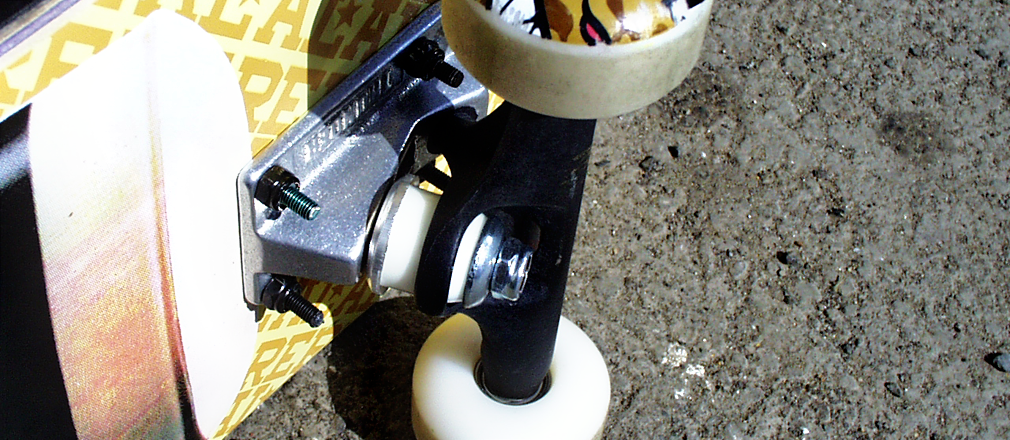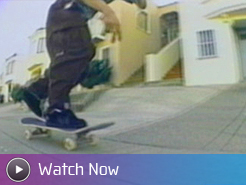So What the heck is a "truck", anyway?
The Science and Art of Skateboard Design (continued...)

The skateboard steering devices on the bottom of the board are called the trucks. Trucks consist of a base plate (mounted to the base of the skateboard itself), an axle which pivots on two urethane cushions (called bushings) and a pivot point. This construction enables the wheels (which are attached to the axles) to swing in a predefined arc, which allows the skateboard to turn.
This design allows the skater to turn the board by leaning; lean right, the board goes right. Lean left, and you go left. A nut called the kingpin nut controls the ease of turning. Tightening this nut compresses the urethane bushings, stiffening the action of the truck. Tightening the kingpin nut makes the board more stable, but makes it much harder to turn. Loosen it, and the board becomes floppier, but much easier to turn.
The most popular truck of all time, and the standard for the modern skater, was the Independent Truck. As designed and produced by the combined creativity of NHS and the Ermico Foundry, the Independent was a wonder of clean design: smooth, easy turning, durable and strong. Fausto Vitello, one of the founders of Ermico and one of the originators of the Independent Truck, described the basic truck design: "The basic skateboard truck has not changed in probably fifty or sixty years. It was designed around the 1920's for ballroom roller-skate dancing,which had a big boom prior to the depression. The basic system for allowing a truck to turn is called the Chicago pivot, and all modern trucks are derived from that. What has changed in the Chicago Pivot truck is that we have refined the system to allow better turning, more stability, and certain other features that skaters demand."
Tim Piumarta agreed the skateboard truck has hardly changed at all over the years. "Trucks have barely changed at all, in fact the skateboard truck design and geometry was lovingly lifted from roller skate base plates going back to the 1950's and before that. Two elastomers sandwiching a yoke which was connected to an axle and everything pivoted on one point."

